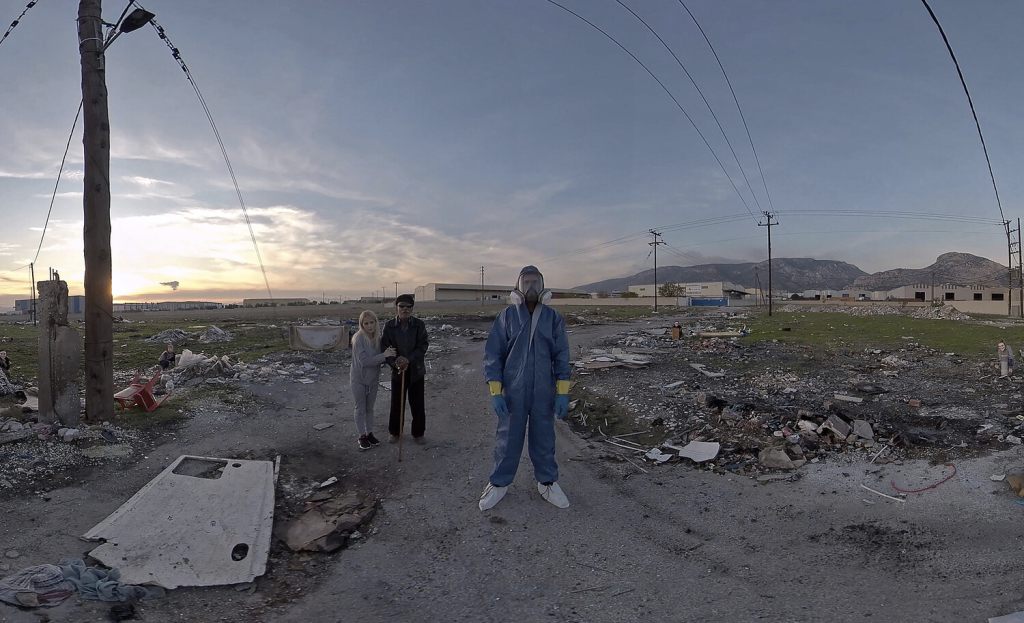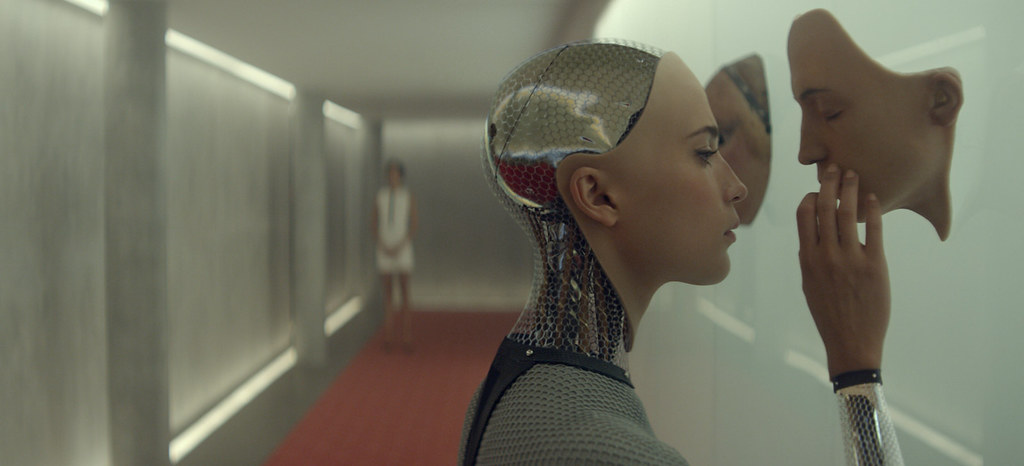Virtual reality is becoming more and more present in exhibition spaces. Entering a space filled with VR goggles can seem confusing as we are used to being able to view a work in the physical space. However, VR art offers a lot of possibilities both for the makers as well as the viewers. Last year, Loukia Alavanou presented a VR work “Oedipus in Search of Colonus” in the Greek pavilion at the 59th Venice Biennale. I think it can be seen as an important step for VR art entering the art canon, however, it still is a long way.

Loukia Alavanou, “On the Way to Colonus.” VR360. Produced by VRS.© Loukia Alavanou, 2021. Source: e-flux
What can fit into Virtual Reality?
VR art is an emerging phenomenon that offers wide possibilities concerning mediums and forms. As virtual reality implies some sort of simulation of reality it can move the viewer to a different space and present an alternative perspective. In relation to exhibiting art, it offers more ways to interact with the artwork and present it. Even though it is still seen as an alternative way of making art, there are many programs made to simulate traditional mediums such as painting and sculpting in virtual reality. Aside from that, VR art can be seen as a medium by itself. Even though VR art can embody the qualities of physical artworks, the display of art in virtual reality is something completely different. Firstly, VR display is far more interactive than the traditional format of exhibiting. Artworks placed in VR do not need to be protected as they cannot be permanently destroyed, giving the viewer more freedom to engage with the piece. Secondly, through the interactive elements, the viewer becomes a participant. To enter the virtual reality they are required to take action, at the least put on a VR device, at the most engage with the presented VR space.
VR and presenting video art
Video and film can gain a completely new quality when it comes to virtual reality. As the viewer is turned into a participant they become a part of the space presented in the video. New technologies of 360-degree cameras offer an easy way to film three-dimensional space. This innovative way of filming connected with VR goggles can transport the viewer to a simulation of any place.
“Oedipus in Search of Colonus”
In the Greek Pavilion of Venice Biennale, the viewers could travel from present Italy to time-deprived Greece to experience a contemporary interpretation of the story of Oedipus. In “Oedipus in Search of Colonus” Loukia Alavanou explores the contemporary issue of exile through an over two millennium-old drama by Sophocles. The work is considered “the first VR film shot in Greece that tells a cohesive story.” As the artist explains it is a ‘docufictional’ short film showing the realities of Athens’ suburban community Romani. The use of VR technology allows a wide audience to enter a space rarely visited by ‘outsiders’. However, how wide the audience was? The film gained high interest and intrigued the public resulting in a massive queue outside of the pavilion. As the number of goggles and seats was limited not everyone was able to see the work–including me! The inclusion of this work in the Biennale shows the importance of this emerging art form, although it also exposes its current flaws.

Outside space of the Greek Pavilion in the 59th Venice Biennale, Source: Days of Art
Even though VR can offer a lot to the art world it still is at the beginning of development. The accessibility is low and the costs are high. The example of Alavanou’s work shows the potential of VR art forms entering the canon, however, the matter of displaying this form of art is still challenging.
Sources:
https://www.e-flux.com/announcements/444697/loukia-alavanouoedipus-in-search-of-colonus/




i think the concept of vr art is interesting but like you stated it is something that is still in development, accessibility is very much an issue but i think that with time either vr willl become cheaper or it will become integrated into an existing piece of tech like our phones. already some of the more high end phones can perform vr. though it is limited to vr videos tech only ever improves. i also think the idea of vr film is fascinating as you would truly experience everything from the view of the main character. have you maybe seen the film hardcore henry?
VR is definitely such an interesting topic. I am very curios as to how it will be shaped in the art world. I cannot think of a universe where the medium od art is VR goggles, but nevertheless, we can already see it becoming a part. Now that you point it out though, I wonder how the problem of expenses will be solved. That is a really valid question. It is such a pity to be waiting and not being able to see the work. I wonder if over time they would start putting these artworks online perhaps so that everyone can watch it at home? Of course, as your post suggest there is a bright future in front of VR art I think!
During the course we have had many insightful discussions in regard to the metaverse and the VR realm, however the one thing I keep circling back to is the tangibility aspect of it, in this case as well. Even though VR art has the ability to showcase physical attributes, they are just… not there. And surely, we go to art museums to look at the art not to touch it, but in many cases it is the dimension of the artwork that makes it so fascinating to look at. I recently went to museum Voorlinden and there was an exhibition from a German artist Anselm Kiefer, whose paintings are “very” spatial. I think for me the whole experience was enhanced simply because I could look at it from many different angles and try to decipher the materials he used. I would be able to look at the paintings from different angles in the metaverse, but the aspect of materiality would not exist, taking away a dimension of the whole experience.
Nonetheless, it is cool to think about it as another medium for art and in what other ways it will be used in the future!